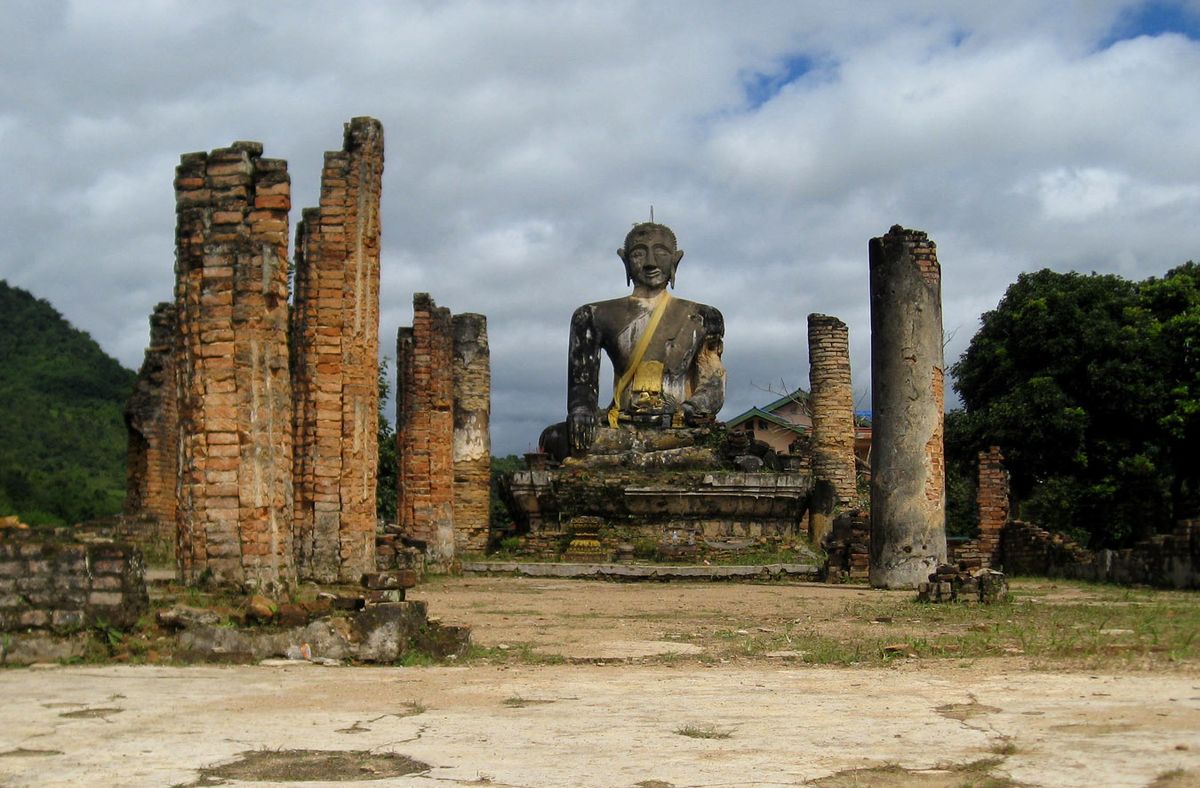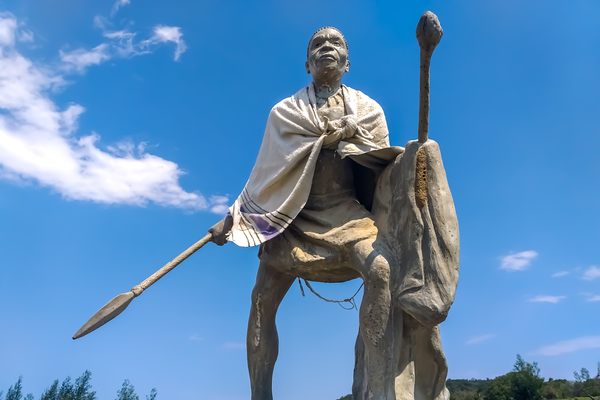About
It is difficult to imagine that the diminutive village where Wat Phia Wat is located, Muang Khoun, used to be the capital of the Phuan Kingdom in the 14th century.
Thai, Vietnamese, and Chinese armies and looters ransacked Muang Khoun for centuries before the Second Indochina War broke out and the town was heavily bombed by the U.S. Air Force. Entire swathes of the town were razed to the ground, including a number of religious sites. Wat Phia Wat collapsed but, against all odds, the large Buddha statue sitting in the temple survived.
What is now referred to as Wat Phia Wat is the compound enclosing both the new temple and the remains of the old one. The new temple is a modern run-of-the-mill Lao temple, and not much of the old temple has stood the test of time, with the notable exception of a Buddha statue. Of the old temple building, only the brick foundation and some pillars remain standing.
This may not be the most beautiful Buddha statue in the country, and the bombing certainly did not help; the right cheek and lips are scarred, and one eye is missing. Yet, this statue mirrors the resilience that the local people demonstrated in the face of almost complete annihilation. Perhaps this is the reason why it is revered by worshippers, that can often be seen praying at the feet of the statue, burning incense and making offerings. A ceremonial sash drapes from the Buddha’s left shoulder to the opposing hip, and in its lap are several Buddha statuettes.
Related Tags
Know Before You Go
Muang Khoun is located about 18 miles (30 km) southeast of Phonsavan. The main road goes by Wat Phia Wat. If you’re coming from Phonsavan, you’ll see the ruins of a French colonial building upon entering the village. Wat Phia Wat is about 200 yards further along the main road.
Published
June 3, 2019






















